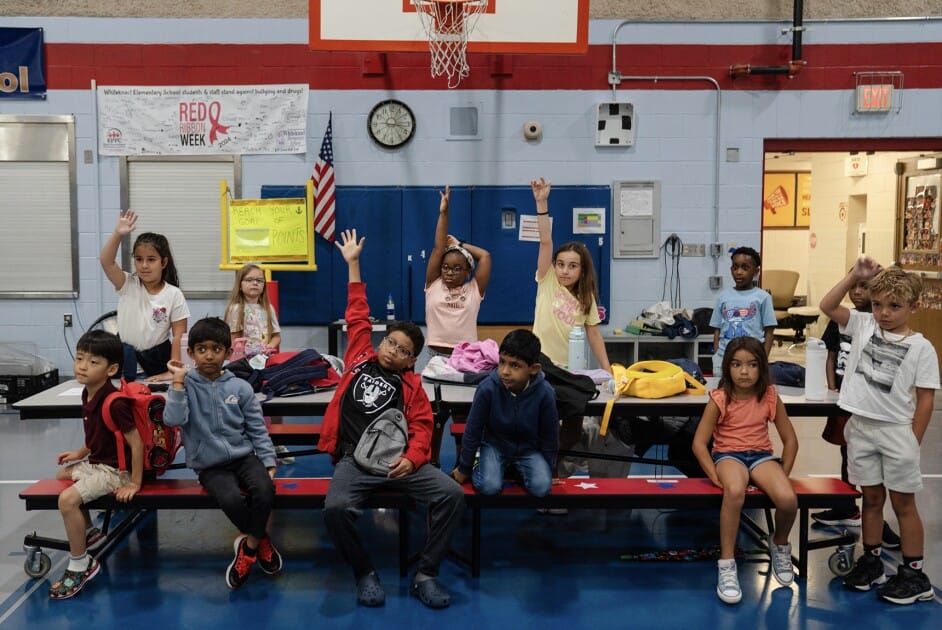The Trump administration confirmed Friday it will soon send states their formula funding allocations for before- and after-school programs nationwide—more than two weeks after the administration withheld those funds, and billions more dollars, for education that Congress approved in March.
The federal Office of Management and Budget told states on June 30 that $6.8 billion wouldn’t flow as expected the next day due to an “ongoing programmatic review.” That review is now complete, an unnamed senior administration official told Education Week through an OMB spokesperson on Friday afternoon.
“Funds will be released to the states,” the statement says. “Guardrails have been put in place to ensure these funds are not used in violation of Executive Orders.”
The spokesperson didn’t respond to follow-up questions about what the guardrails are, or when states will see the funds.
The administration is still withholding more than $5 billion from six other education funding streams that by law were due to flow July 1, including for teacher training, English-learner services, migrant and adult education programs, and academic enrichment.
K-12 school districts nationwide had been banking for months on receiving, by July 1, routine money for the upcoming school year from dozens of federal funding streams, including one known as Title IV-B, or the 21st Century Community Learning Centers grant program. The program, created by Congress in 1998, is managed by the U.S. Department of Education and helps districts in every state support vulnerable students and provide extra instruction before and after school hours.
But for the last 17 days, states and districts have scrambled as the Trump administration withheld the $1.4 billion Congress allocated for that program in March, plus $5.5 billion more for six other programs, for a combined total of more than $6.8 billion.
Education advocates and Democratic lawmakers have decried the move as unconstitutional and argue that it will directly harm the nation’s K-12 students. Two dozen states sued the Trump administration in federal court on July 14, aiming for an injunction that would restore the funds for their schools. Ten Republican senators later joined the chorus, calling on the administration to release the funding in a July 16 letter.
On July 18, Sen. Shelly Moore Capito, R-W.Va., posted on X that Russell Vought, director of OMB, had informed her the money will flow.
“This is in direct response to a letter I led my @SenateGOP colleagues on earlier this week,” she wrote. Capito’s letter included signatures from her and nine other Republican senators.
The day before, Sen. Tommy Tuberville told reporters he had spoken with Education Secretary Linda McMahon about the frozen education funds, and planned to do the same Friday night at dinner with President Trump.
News that Title IV-B funds will soon flow should come as a relief to after-school program operators. Many have had to contemplate soliciting donations, scaling back services, canceling expansion plans, or shutting down altogether as the new school year gets underway. Several programs had already moved to suspend summer programming and lay off staff.
Many programs were set to shut down without federal money
More than 1.4 million students nationwide attend programs at 10,000 sites funded almost entirely with Title IV-B dollars, according to the Afterschool Alliance, a nonprofit advocacy group. These programs—often the only such provider in the community—offer academic support, activities and games, and meals for students who might otherwise have nowhere else to go when school isn’t in session.
Dozens of school districts for months had planned to receive at least $1 million each in Title IV-B funds, according to analyses of federal data by Education Week and the progressive think tank New America. One district in California, one in Florida, and three in West Virginia were expecting more than $10 million apiece.
Slightly less than a third of the entire nationwide allocation for schools is destined for three states—California, Texas, and New York. Every state expected at least $6.5 million in Title IV-B funds, according to federal data.
Lawmakers in Idaho last week identified close to $3 million in federal funds left over from the previous year that would help keep after-school programs open until December without federal support.
Congress approved a spending package in March that included level year-over-year funding for federal education grants. Thousands of school districts nationwide have since been crafting budgets assuming they’ll get a wide range of routine federal funding streams, including for Title IV-B.
But one day before the routine July 1 due date for the federal government to supply allocated education funds, the Education Department abruptly told state agencies it would not send out funding the next day for seven grant programs totaling $6.8 billion. The three-sentence memo said the money was under review but didn’t specify when the review would end or whether the money would flow once it did.
Education advocates and federal lawmakers—largely Democrats—remain deeply alarmed that the Trump administration continues to hold back more than $5 billion in allocated education funding without asking Congress permission to do so, as federal law requires.
2025-07-18 17:19:20
Source link

